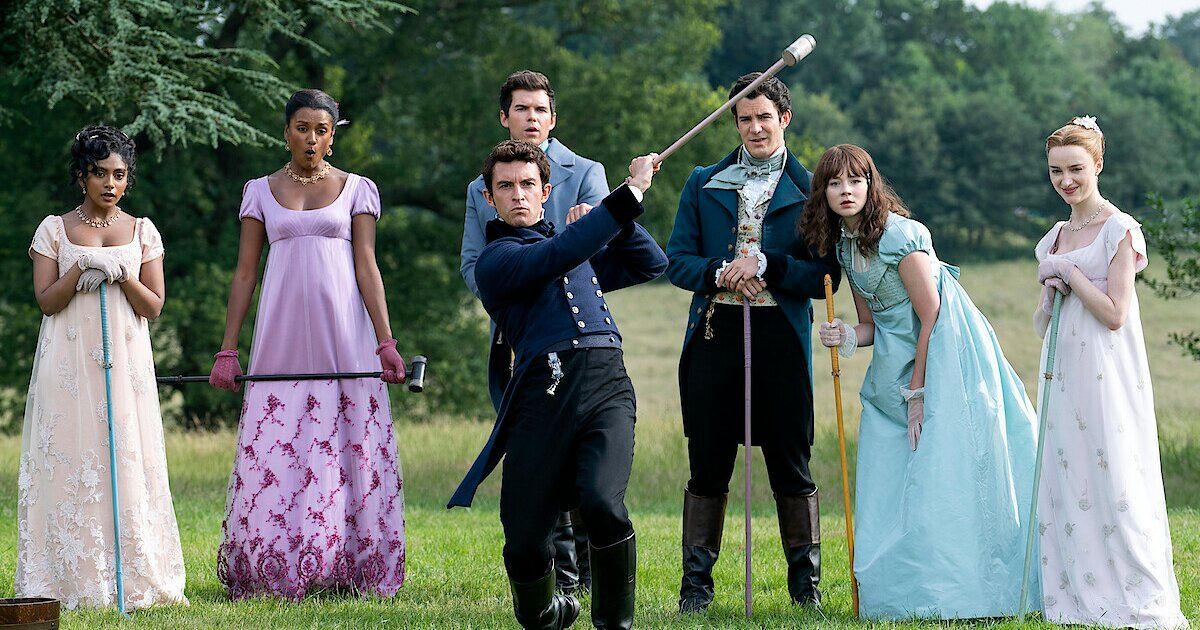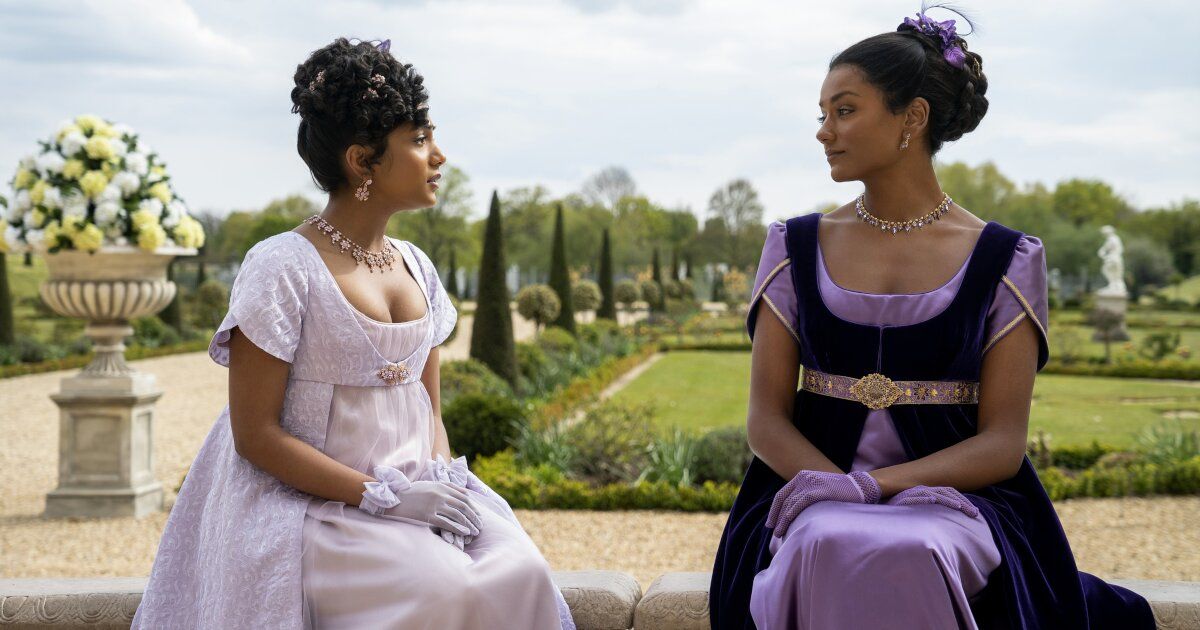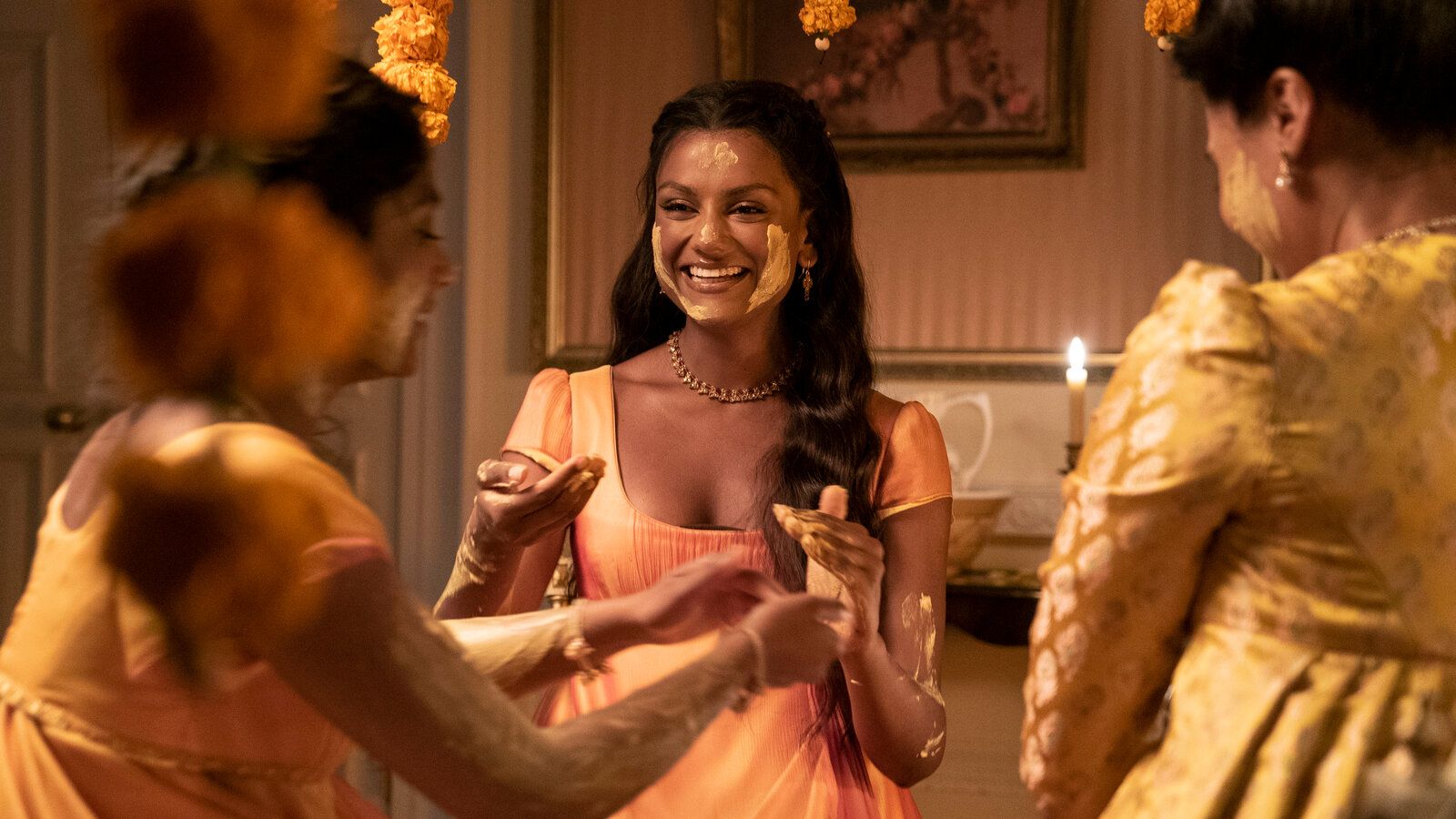Bridgerton’s return to Netflix was one that was looked forward to with much anticipation and excitement. Ever since Netflix publicized the face of Simone Ashley, who would play Kate Sharma, in February 2021, expectations for the series have been soaring. The possible South Asian representation in the series quickly became the center of discussion. Now that the series is finally here, it is safe to say that Bridgerton Season 2 has definitely not disappointed.
The first season of Bridgerton made a momentous move in including characters of Black descent in its lead roles. The portrayals of these characters firmly established Bridgerton as a series spearheaded by inclusivity and diversity. Season 2 has followed the same path in choosing to cast characters of Indian heritage as its lead actresses. As such, Kate Sharma is portrayed by British-born Tamil actress Simone Ashley, and Edwina Sharma is played by British-Indian actress Charithra Chandran. A fact noted and appreciated by many fans was the fact that Bridgerton did not simply limit itself to a token representation of the South Asian characters, instead giving the characters centrality and substance within the plotline.
Depiction of South Asian Characters
The Sharma sisters, Kate and Edwina, shake up the London season to find a match for Edwina as Jonathan Bailey’s Viscount Anthony Bridgerton embarks on his own search for the perfect wife. In how they interact, behave, and conduct themselves, Kate and Edwina Sharma are depicted as self-assured, headstrong, confident women who exercise their own agency. Kate and Edwina play empowered roles. They are accepted for who they are, which is a welcome deviation from the otherwise stereotypical mainstream South Asian trope of "conflict based on skin color."
The decision made in Bridgerton Season 2 to place South Asian characters in leading roles within the British ton of the Regency Era has also meant that the characters have strayed from the stereotypical roles which are often afforded to South Asian actors and actresses in mainstream media. While, in most instances, South Asian characters are portrayed as doctors, IT geeks, nerdy sidekicks to protagonists, or taxi drivers, Bridgerton has allowed the Sharma sisters to dominate the series and become its focal point- a fact that has thrilled South Asian fans.
Speaking at a press conference held in March 2022 about South Asian representation in the series, Simone Ashley said:
“We are representing a minority of women in particular seen on television screens and I think it’s wonderful that more South Asian women can identify themselves within these characters.”
True South Asian Elements
Bridgerton Season 2 has, in no way whatsoever, shied away from incorporating all that is South Asian into the series. From the dresses to the jewelry to the vocabulary used by the characters, the show has taken care to ensure that a tinge of South Asianness is present in it all. This attention to detail that the show has given to its South Asian characters has not gone unnoticed by viewers. Many have picked up on the terminology of "Appa," "Didi," and "Bon," used frequently in the series. Appa translates to father in Tamil, Didi is the Hindi term for elder sister, and Bon is a Bengali term that translates to little sister.
The jewelry worn by the Sharma sisters also has a distinctly South Asian quality about them, seen through the vibrant colors that have been used in fashioning them. The most notable and significant piece of jewelry is perhaps the wedding bangles that Kate attempts to gift to Edwina. Even the outfits donned by the Sharma sisters, although conforming to the styles of the British ton, have their own unique South Asianness about them, owing to the intricate fabrics adorned with floral patterns, beads, and sequins representative of the South Asian region.
Homage is paid to South Asian culture through the inclusion of customs and rituals, the most notable being the Haldi ceremony before the wedding. The Sharma women, Kate, Edwina, and their mother, Mary, portrayed by Shelley Conn, gather to apply turmeric paste on Edwina’s arms and face. The ceremony is a traditional Indian pre-wedding event that is considered to bring blessings to the married couple. The term "haldi" translates to turmeric. South Asian fans may also pick up on the orchestral version of "Kabhi Khushi Kabhie Gham," a track from a famous 2001 Bollywood movie, playing in the background during the ceremony. Speaking at a press conference for the series, Chandran said:
“That movie and that song is a Bollywood staple. Everyone's raised with it. As soon as the song came on, I was like, hold on, and then rewind it and immediately pause to text Chris, being like: ‘This literally brought tears to my eyes’”
What Do Fans Think?
The portrayal of South Asian characters in a Netflix series with a large and loyal fanbase has meant a lot to those of South Asian descent. Many were overcome with emotion as they witnessed their own likeness and culture on screen. The smallest of details, such as Kate adding spices to her tea, in the manner that many South Asians make chai, and Kate oiling her sister’s hair, have been picked up on and praised by viewers.
Taking to Twitter, a user comments on what it meant to see the expectations of South Asian older siblings depicted in mainstream media.
As with all things on the internet, reactions to the portrayal of South Asian characters and the importance attached to South Asian representation have not all been positive. However, it is unarguable that this representation has meant a great deal to the South Asian community. It is also evident that the producers of Bridgerton Season 2 have taken great care to ensure a nuanced and substantial portrayal of South Asian characters in the latest series. This has been a correct and much-needed step towards diversity and inclusivity in mainstream Hollywood media.



